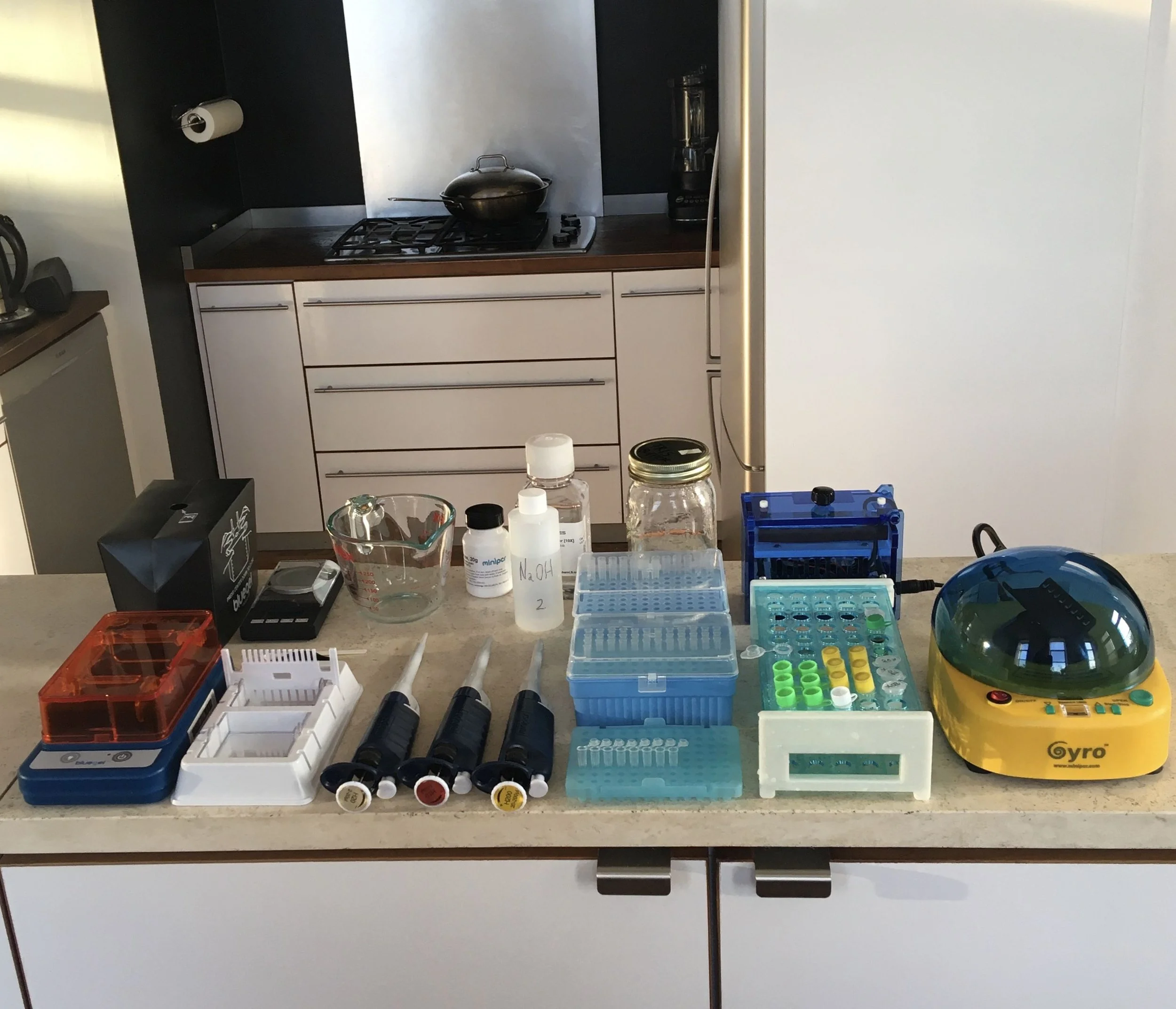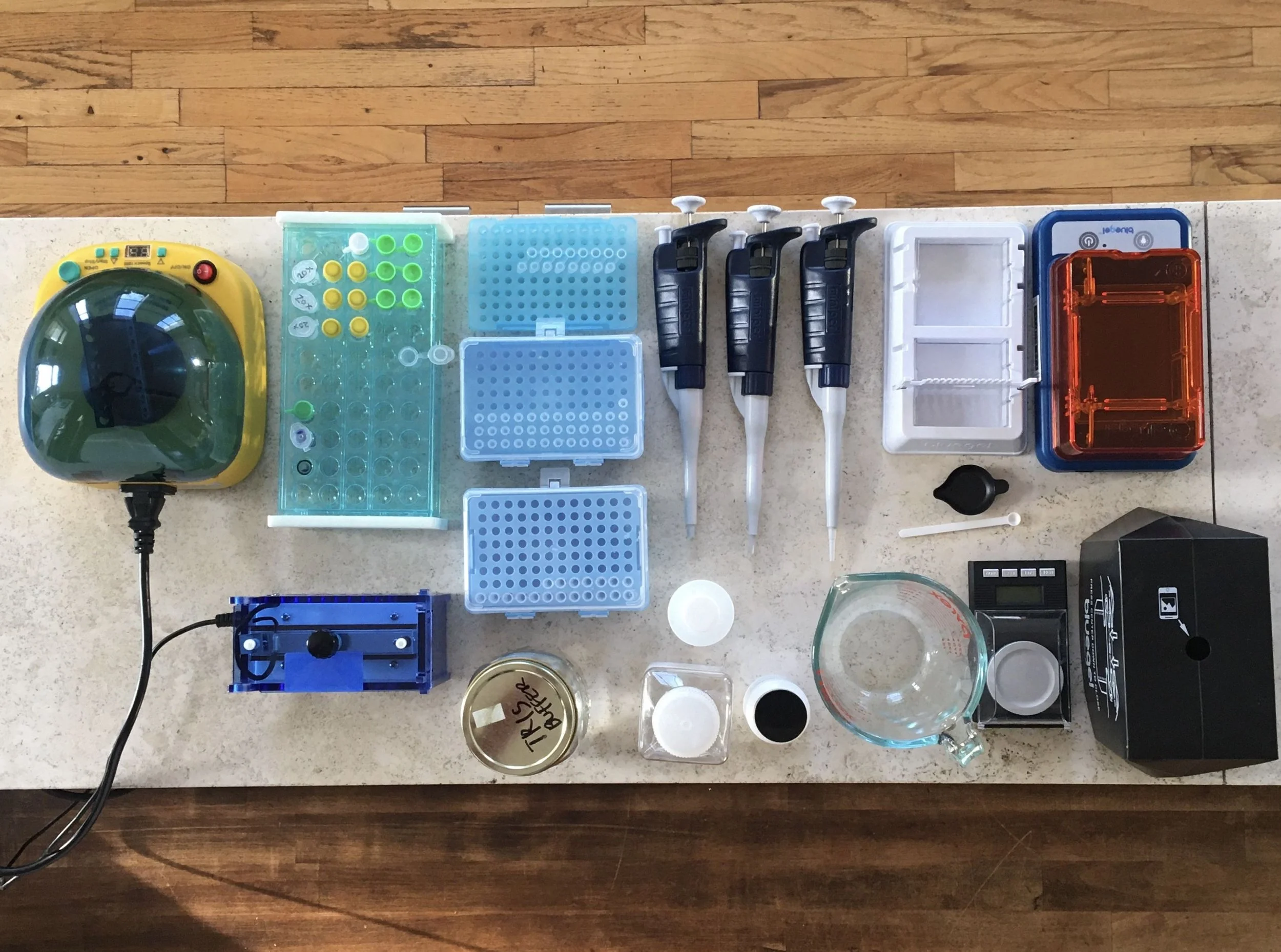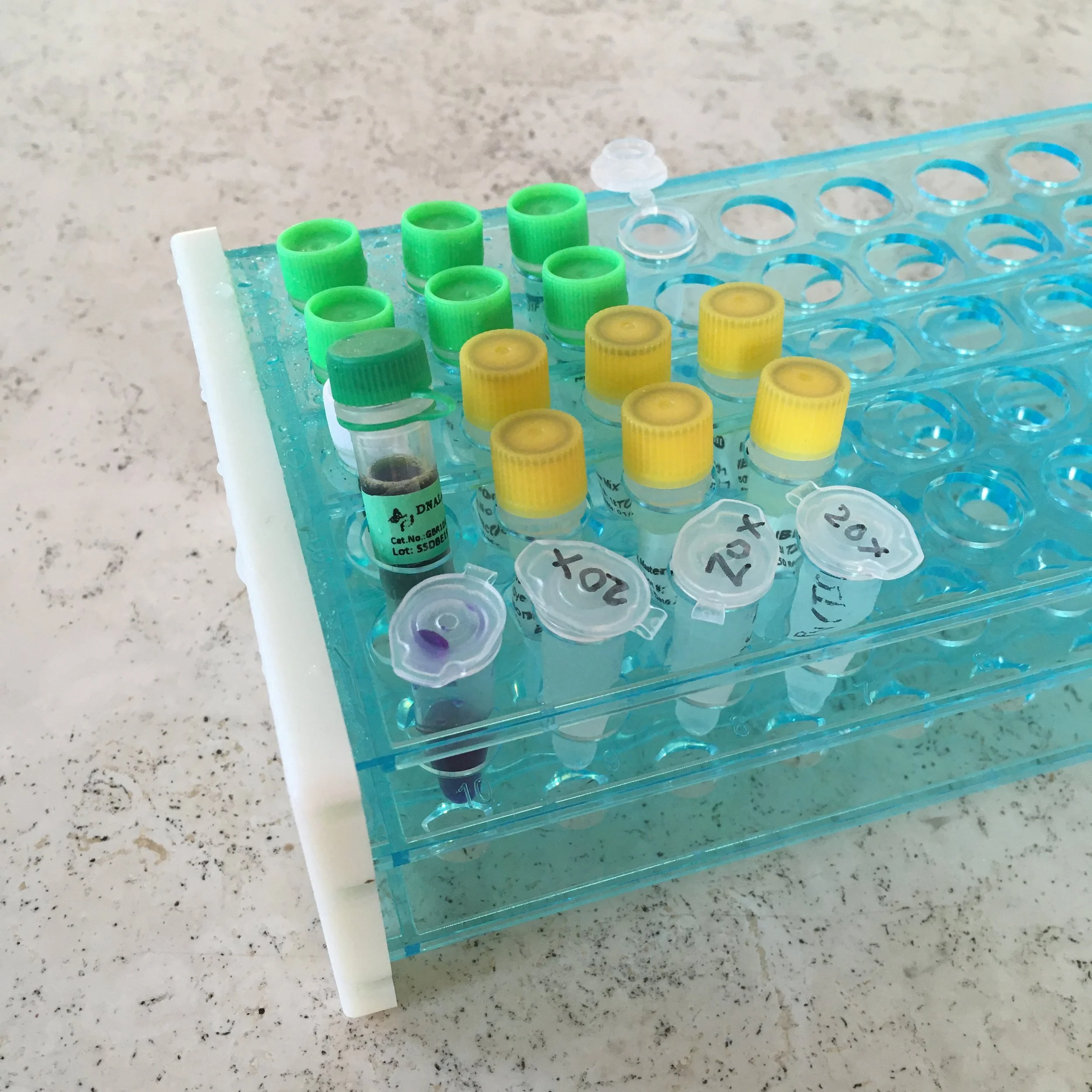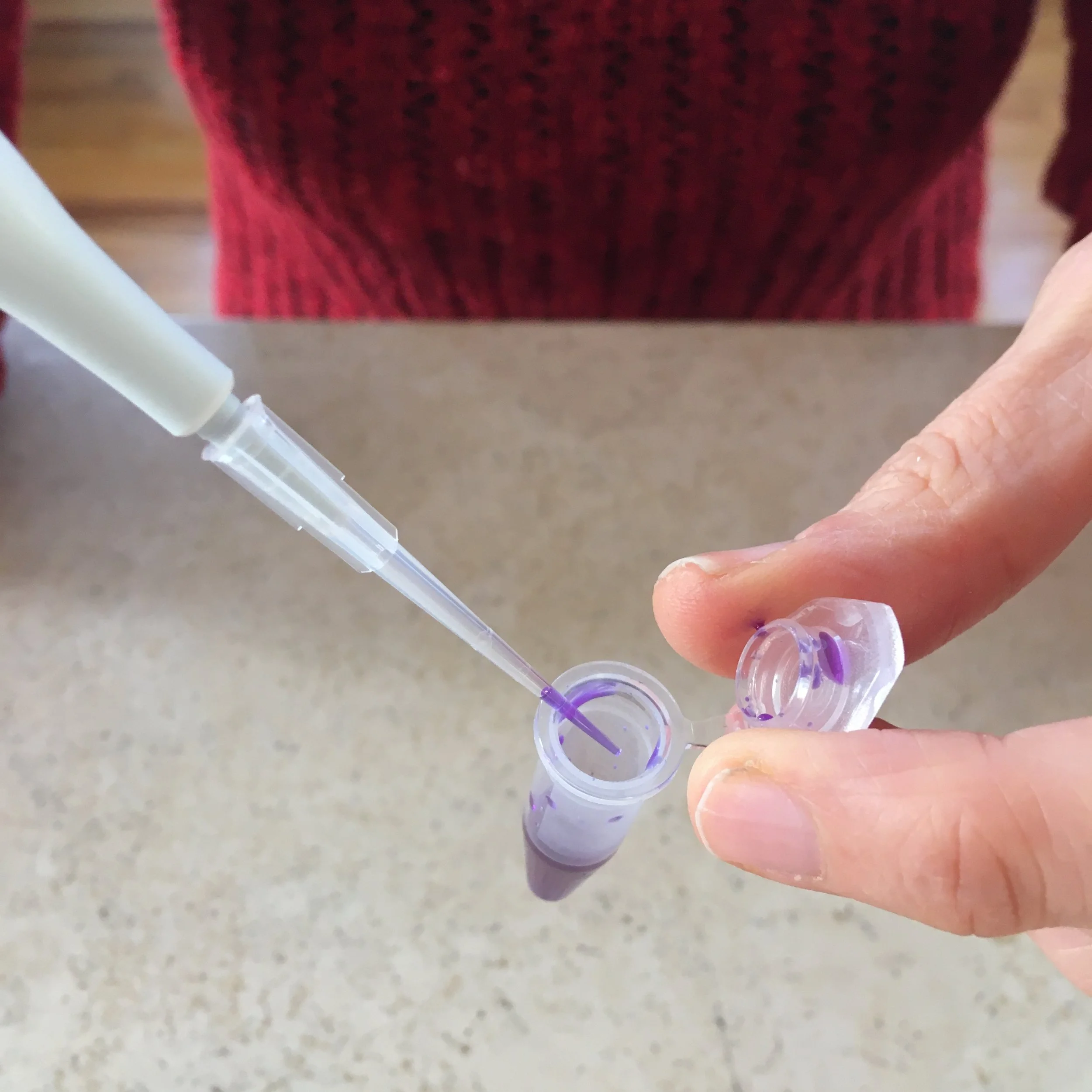My PCR journey: how NAMP [FUNDIS] turned me into a kitchen scientist
When I signed up to co-lead the New York Mycological Society’s interactions with the North American Mycoflora Project [FUNDIS] I didn’t quite realize what I had signed up for.
Because two years later here I am, with my own lab, doing polymerase chain reactions in my spare time, building phylogenetic trees and submitting sequences to Genbank like it’s no big deal. How did this arts major with zero knowledge of biochemistry get there?
Managing our NAMP submissions and helping to interpret the results for the club inspired me to learn what DNA sequencing actually is, what its promise and shortfalls are. I got hooked on the excitement of getting back results, results that resolve mysteries and create new ones.
Just as I was becoming more interested in sequencing, I was also getting a bit more serious about going deeper on specific kinds of fungi, namely dung fungi, Amanitas and Russulas. This in turn made me wish I had more access to DNA sequencing, but I couldn’t exactly commandeer the club’s precious supply of tubes for my own pursuits.
I’d heard about people doing their own sequencing but I assumed this would require a deep knowledge of chemistry, large amounts of space and very expensive equipment. It turns out I was wrong on all counts. My lab fits into a backpack, didn’t cost a fortune, and thanks to a generous and supportive community, learning how to use it wasn’t all that hard.
I bought my lab from a company called MiniPCR, but there are others. Many institutional labs are selling off older equipment on eBay, and a functional lab can be put together for less than $1000. My lab takes up about two square feet of kitchen counter space and disappears into a couple of boxes when I’m done.
Using a lab is a bit like cooking. Once you have the hardware you’ll need a recipe, ingredients and tools. The recipe is called a protocol; I created my own by combining those of others. As for the ingredients and tools, you’ll need things like primers and other reagents and plastic ‘consumables’ like tubes and pipette tips which can be bought online. And, finally you’ll need a lab for the Sanger sequencing of the result of your PCR. That’s the one part of the process that can’t be done at home yet - it requires a very large and expensive machine. Luckily, getting a Sanger sequence isn’t expensive.
Doing one run of eight sequences takes about 4.5 hours, but most of that time you’re just waiting and can do other things. Actual work time is only 1.5 hours, plus all the time you’ll spend on playing with the sequences.
You’ll perhaps wonder whether I’m still interested in NAMP now that I do my own sequencing, and the answer is a resounding yes. The role of NAMP is about so much more than just helping clubs with IDs - it’s a community, and a national effort to document fungi in a rapidly changing world of habitat losses, climate change, range extensions and extinctions. It’s a place to share data with each other and to generate insights from large bodies of data.
Having a home lab allows me to pursue my own very specific interests, act on a hunch to sequence weird, or questionable fungi without fear of wasting my club’s money and resources. It allows me to get quick results when I’m pursuing a theory. And it’s just a fun way to de-stress - when you’re pipetting you really can’t think about anything else.
Is it for everyone? No. But it’s an option for those interested in doing more sequencing than their club’s resources will allow.
So thank you NAMP for sending me on this path!
Resources: you'll need:
A lab (centrifuge, thermal cycler and gel electrophoresis setup): I use MiniPCR, but there are others
A protocol: Here is my protocol - but there are others for example Counter Culture Lab’s which also includes a list of equipment needed if you’re buying used, Alan Rockefeller’s video on how to do DNA barcoding is a great intro on how to do PCR
A lab to do Sanger sequencing on the DNA you’ve amplified: I use MCLab but there are others; not all labs will work with individual researchers
A program to look at and edit your sequences: I use the free version of SnapGene, but there are others
A helpful community: Fungal sequencing Facebook group. If you live in a big city you might have a public biolab in your area; many give classes and workshops on DNA sequencing. Counter Culture Labs in Oakland, Genspace and Biotech without Borders in Brooklyn are examples.
Scientific background information: there are many YouTube videos that explain Polymerase Chain Reaction, like this one by the DNA learning center




